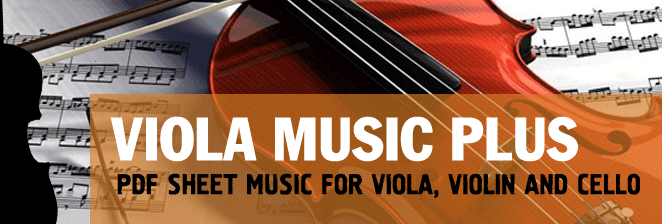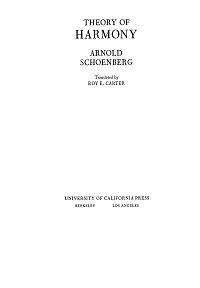|
|
 |
|
| |
| |
|
Schoenberg Arnold - Theory of Harmony |
Schoenberg Arnold - Theory of Harmony
Schoenberg Arnold - Theory of Harmony. You can download the PDF sheet music Schoenberg Arnold - Theory of Harmony on this page. This Guide is designed to facilitate instruction from Schoenberg's Theory of Harmony. In view of the abundance of ideas and the great amount of space taken by theoretical derivations and justifications of harmonic phenomena, by polemical arguments, and by criticisms of the usual system of instruction, the use of that book may have been inconvenient for many a pupil who wanted merely to learn or review the handicraft of harmony, and for many a teacher who only wanted a facile survey of the material to be taught. This Guide should remedy that inconvenience. It leads through the course of instruction and indicates only those things the pupil must unquestionably learn.
The Guide, in outline form, cites page and line of Schoenberg's text where the pupil or teacher may find the names of chords, instructions for building and connecting them, pertinent examples, and suggested exercises. These things the pupil 'must unquestionably learn'; he may, if he chooses, ignore all the rest. He may ignore the prefaces, the first three chapters, and the first section of the fourth, as well as the last chapter and many sentences, paragraphs, and pages from other chapters. Roughly estimated, the unessential portions make up at least one third of Schoenberg's treatise.
This new, complete translation grew out of the conviction that the abundance of Schoenberg's theorizing, speculation, and polemics is no less 'essential' than the purely technical material. In fact, he so interwove the practical with the theoretical that the one is incomplete without the other. For example, he decried the usual exercises by which a pupil is supposed to learn harmony: the realization of given figured basses and the harmonization of given melodies. If we would understand why he objected to such exercises, what alternatives he recommended, and why he recommended these, we must read his theoretical commentary together with his instructions on how to proceed.
To download PDF, click the "Download PDF" button below the appropriate sheet music image.
To view the first page of Schoenberg Arnold - Theory of Harmony click the music sheet image. |
| PDF format sheet music |
|
|
|
Book: 455 pages. 23673 K
|
|
 |
|
|
|
| Download PDF (14.99
€) |
|
|
|
Schoenberg's Theory of Harmony is indeed his seminal theoretical work. In his later textbooks he was able to keep his theoretical commentary to a minimum by simply referring the reader back to his earlier work. Moreover, he gave expression in his Theory of Harmony to a number of the notions that have most excited the twentieth-century musical world. Most obviously, there is the proposition that the system of major-minor tonality is no necessity of music, no natural law - even if it is partially founded upon the natural laws of harmonics; it is rather a convention, once viable, now exhausted, now undoubtedly to be modified or replaced by other conventions, perhaps by 'tonalities' of twelve tones. Then there is the fascination with 'tone colour' (see the last two pages of the text); there is the notion that musical order may be manifest in many previously inconceivable ways; and there is the very questioning of the need for order in music.
This translation is based on the third, revised (improved) and enlarged edition, completed in 1921 and published in 1922. The first edition was published in 19ц. Since the appearance of the revised edition, it has been reprinted a number of times. The last copyright date is 1949. The latest reprint was edited by Josef Rufer, whose Preface is dated Autumn, 1966. As noted in his Preface to the seventh edition, Rufer made a few minor alterations following Schoenberg's marginal notes (dated March, 1922) in a 'Handexemplar mit Fehlervormerkungen' (author's copy, indicating errata) and in addition deleted four of Schoenberg's footnotes. These alterations were not made in the present translation, but they are cited at the pertinent places by translator's footnotes. Rufer also corrected typographical errors in the examples and made a few minor revisions in their figuration. The examples here have been revised according to Rufer's corrections and revisions. |
|
|
|
|
| |
|
|
| |
|
|
|
|